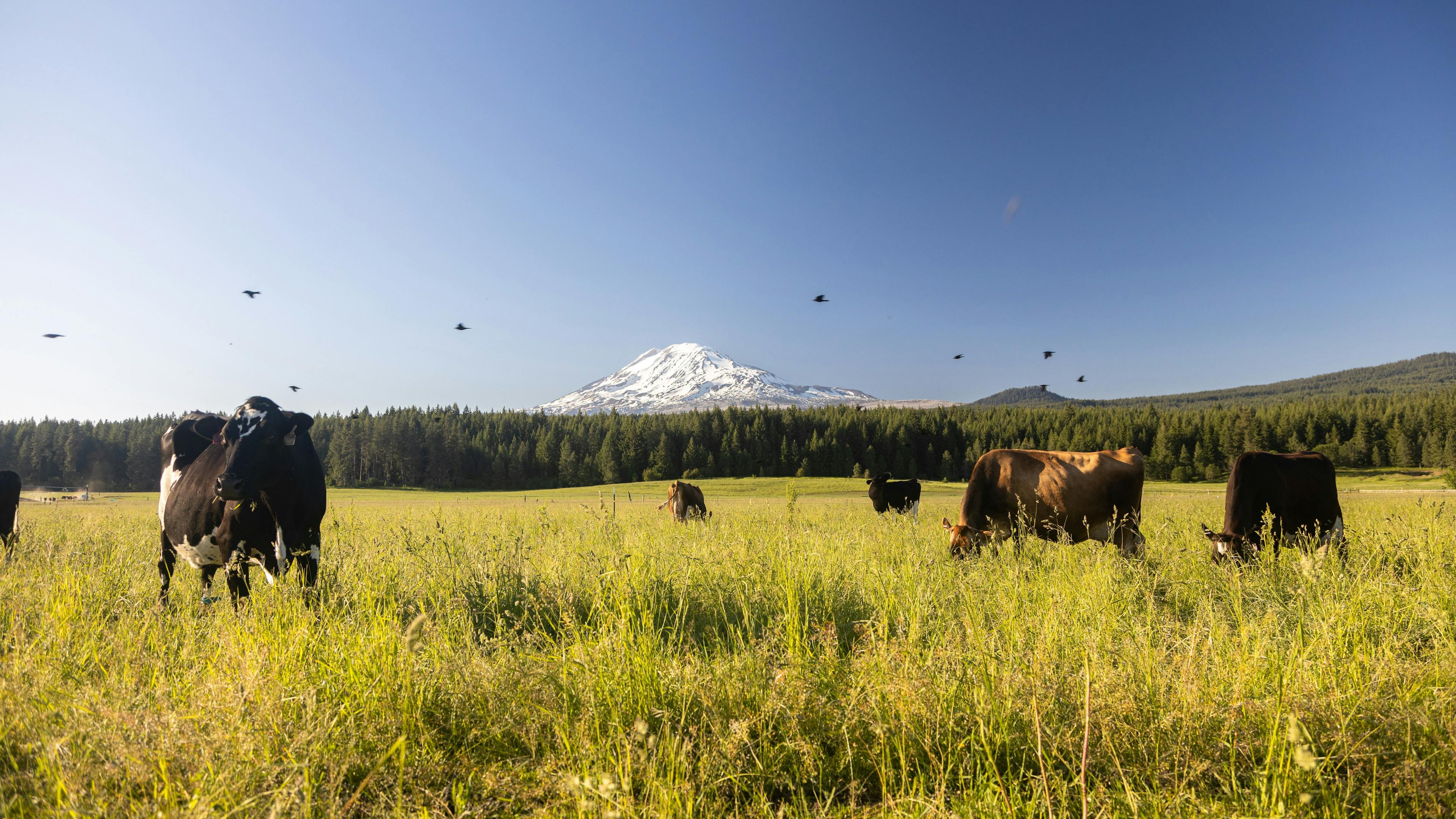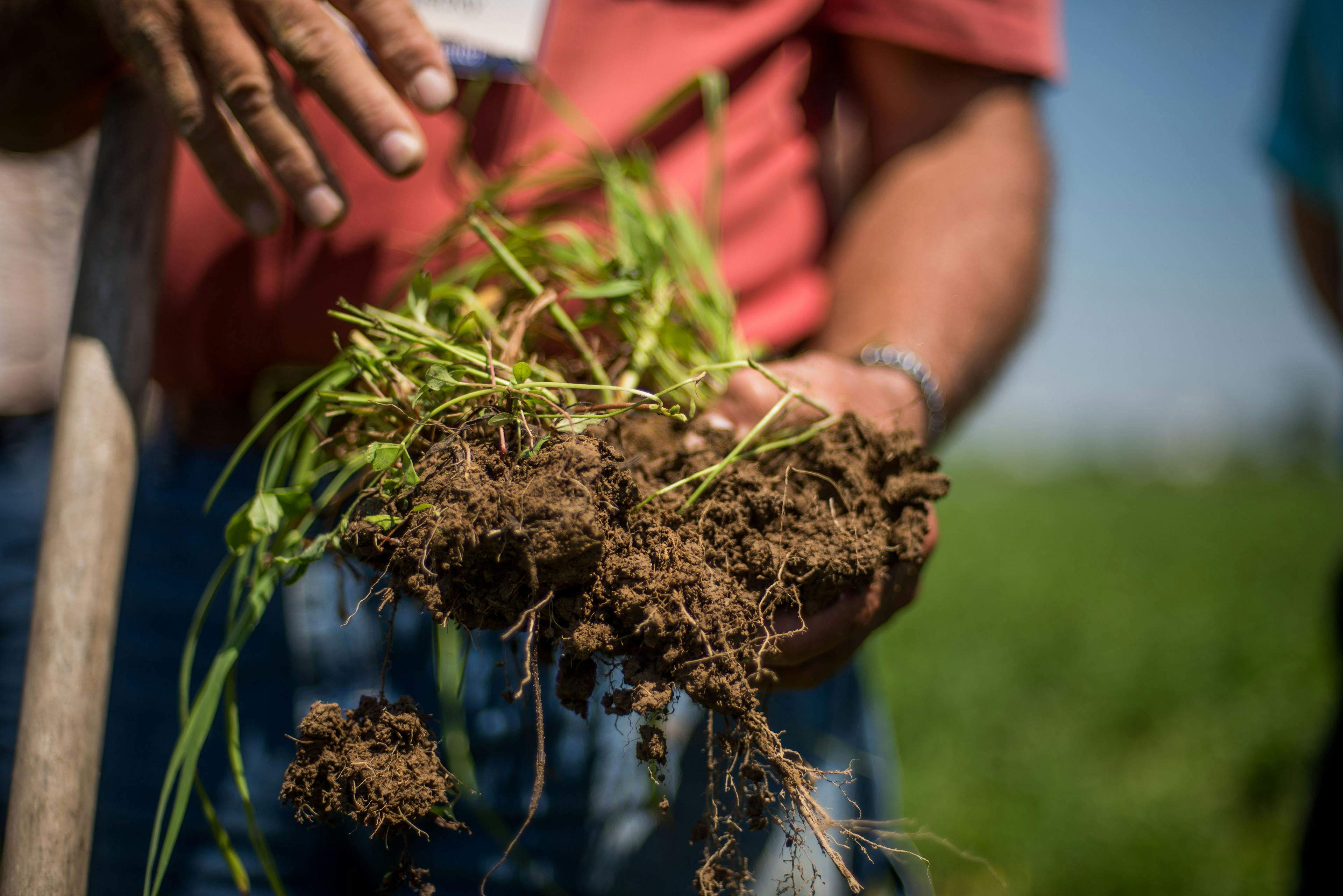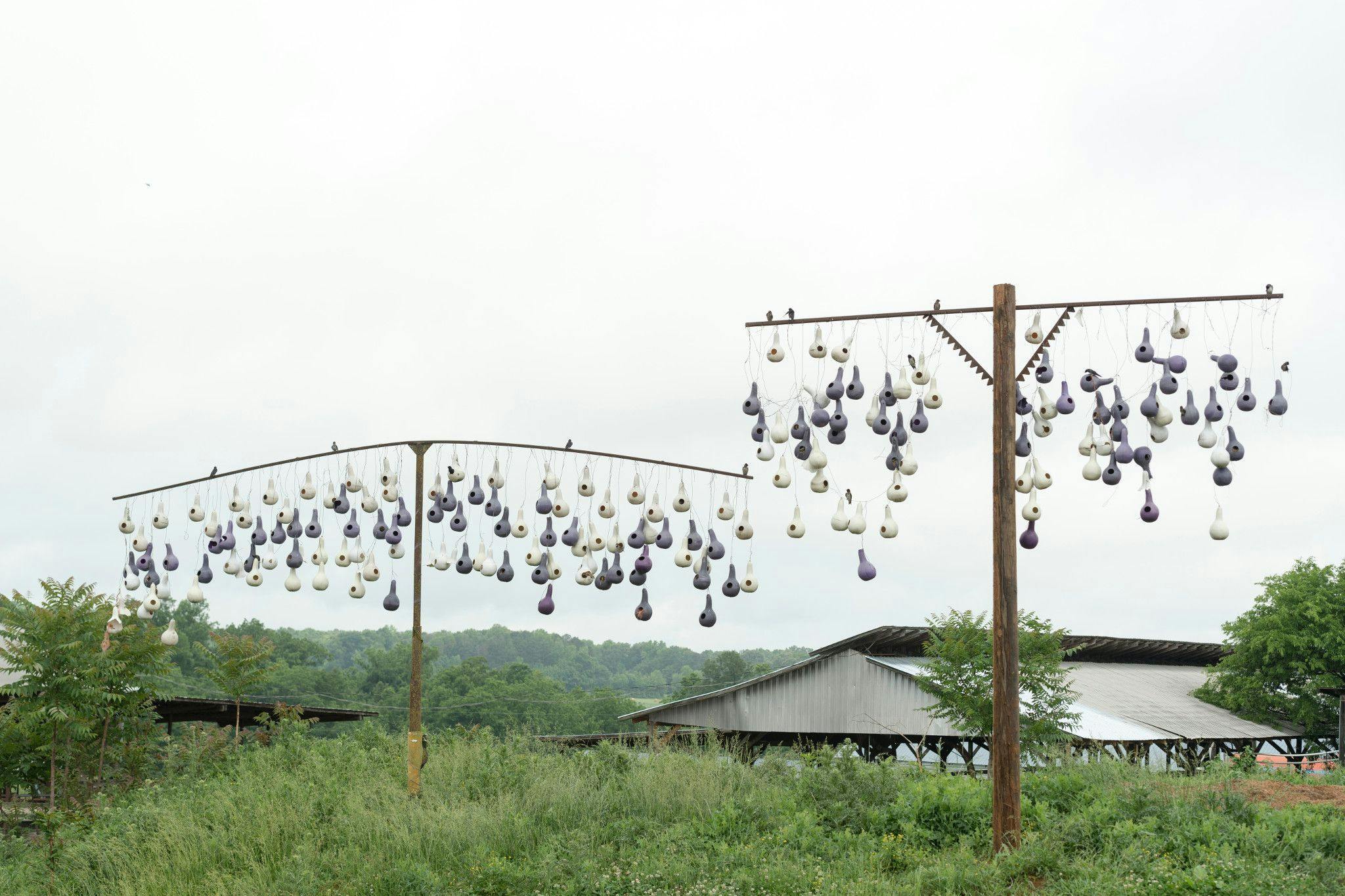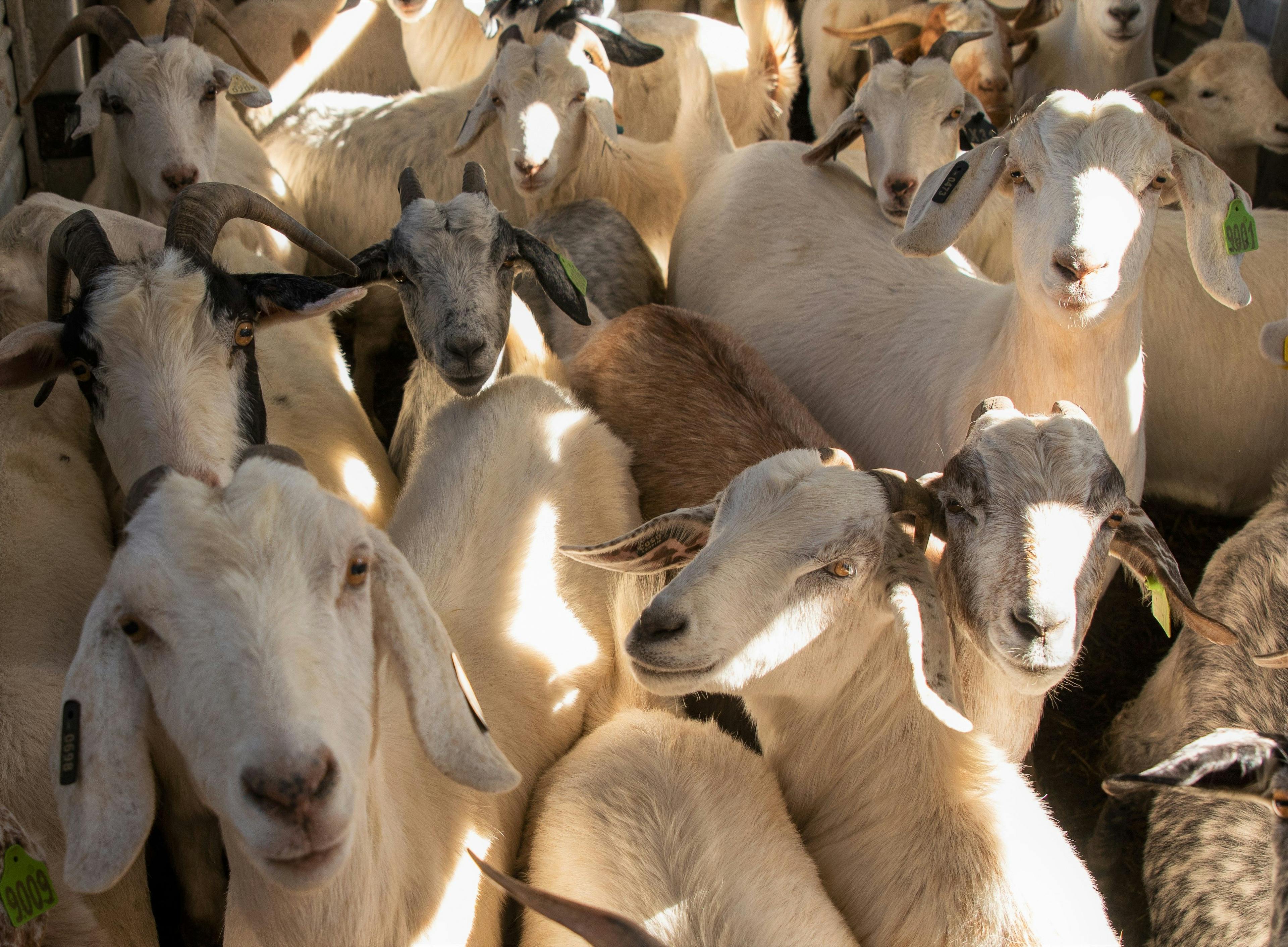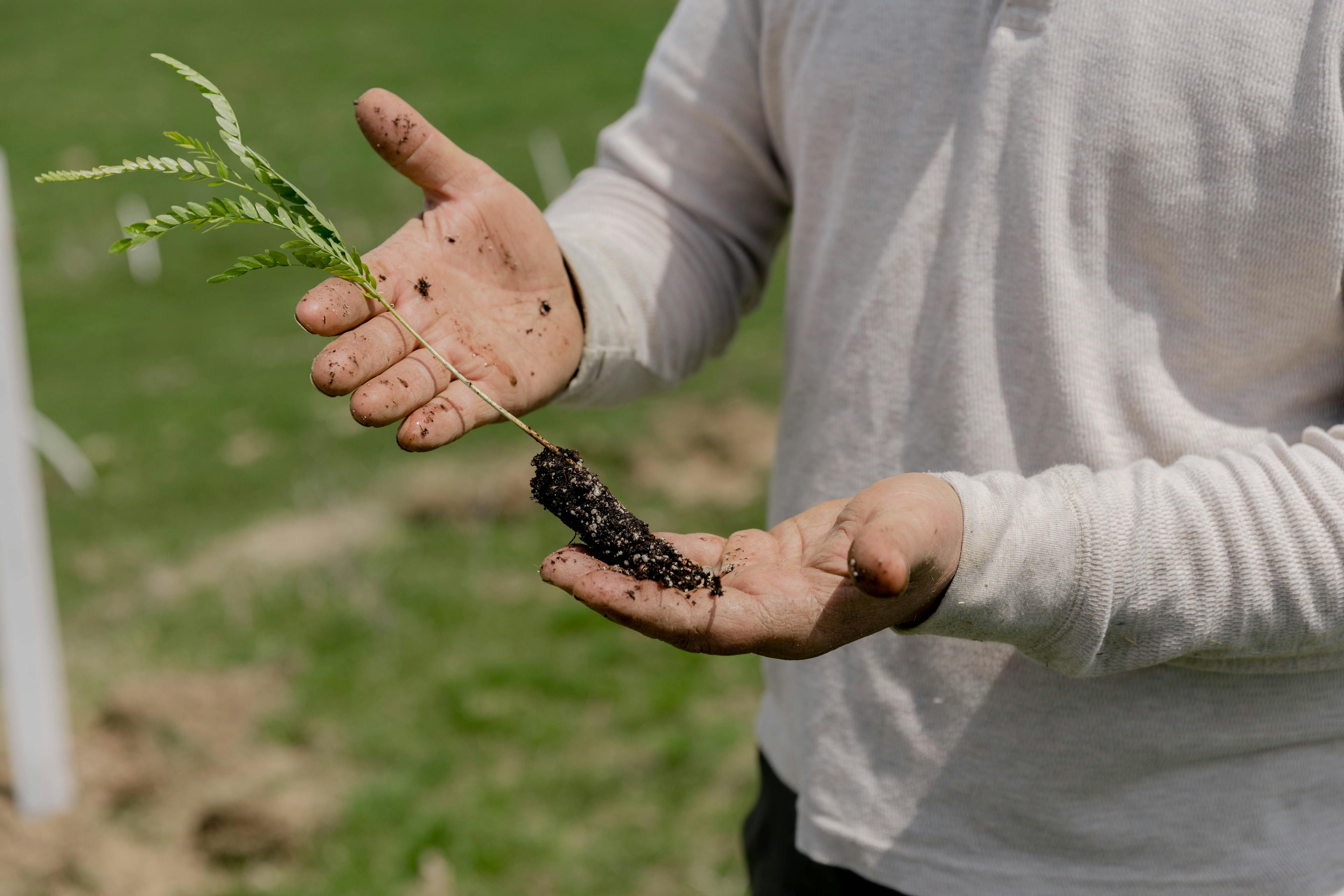
Organic
9 Simple Strategies to Create a Low-maintenance, Eco-friendly Lawn
Few images depict the beauty of country life more than cattle grazing in a pasture. Cows love grazing — and farmers love pastures, too. Pasture grasses prevent erosion, increase the amount of carbon stored in the soil and improve biodiversity, while grazing cattle provide natural fertilizer.
Residential lawns don’t offer the same benefits as pasture. Annually, the U.S. uses 90 million pounds of fertilizer, 78 million pounds of pesticides, 1.2 billion gallons of gasoline and almost 8 billion gallons of water to maintain more than 40 million acres of turfgrass nationwide.
What made large, lush green lawns so desirable in the first place? We’ll look into it and get into how you can create an earth-friendly yard. There are numerous easy ways you can care for your lawn more like a farmer to reduce your environmental footprint!
Why Are Groomed Lawns So Desirable?
The concept of the lush lawn dates back to the 1700s when landscape designers in England and France started adding grass areas into their garden designs. The amount of maintenance meant that only the wealthiest homeowners could afford lawns.
Thomas Jefferson added a lawn at Monticello in 1806, and other wealthy landowners followed his lead. By 1868, several lawnmower patents had been issued, but the equipment was so expensive that it was considered a luxury item.
Spending Saturdays mowing and fertilizing the grass in pursuit of a lush, green lawn steadily evolved as part of the American dream. Lawns have been called the “status symbol of leisure,” demonstrating that homeowners have the time and the means to perfect their landscapes.
Organic farmers rely on cows to keep the grass “mowed” and the weeds down in their pastures. You might not have cows grazing in your suburban yard, but that doesn’t mean you couldn’t grow grass like an organic farmer.
Follow these nine tips to have an earth-friendly yard.
No. 1: Choose the Right Grasses
When it comes to grass, not all species are created equal. So, what’s the most environmentally friendly lawn? It depends on where you live. In the central United States, buffalograss offers a durable, drought-tolerant alternative to traditional turfgrass. Pest-resistant sedge grasses are an ideal turf replacement in New England, and curly mesquite grass thrives in dry climates like Texas and Arizona.
Your local extension agent can recommend native grasses that will thrive in your area and offer ideas for making your lawn eco-friendly. (Extension offices nationwide provide local expertise and best practices at no cost to residents on subjects like food, family, farming and more.) Remember to ask about growth rate, pest- and drought-resistance and light and soil requirements to select the best native grasses for your lawn.
Choosing native grasses, which are well suited to local climates, offers significant benefits. Native grass species can help reduce erosion and decrease the need for water, fertilizer and pesticides.

No. 2: Consider Adding Clover
What is the best thing to plant instead of grass? Clover is a great option for lawns!
Some homeowners apply “weed and feed” fertilizers to kill clover, while others embrace clover as a lawn alternative that has major curb appeal. Clover lawns require less care than traditional grass. White clover (Trifolium repens), a low-growing, fast-spreading perennial plant that produces pretty white flowers in spring and summer, is an excellent alternative to a traditional lawn.
Farmers often use clover as a cover crop because it helps “fix” nitrogen in the soil and provides good forage for livestock. Cows love clover! As an alternative to grass, clover requires less water and also serves as a nectar-rich plant for bees, butterflies and other pollinators.
Wondering how to reseed/sod your lawn with clover? It couldn’t be easier. Clover can be grown from seed sown with a regular fertilizer/seed spreader. It grows best in moist soil and sun to part shade. When it gets tall, you can mow clover just like turfgrass. (Clover requires less mowing, some say as little as a few times a season, to keep that tidy look some homeowners seek).
No. 3: Get Back to Natural
Native plants provide the best sources of pollen, fruit and seeds for wildlife. The biodiversity benefits and other eco-friendly attributes, including lower pesticide use, reduced air pollution, reduced erosion and less water use, have led to an increased interest in using native plants to replace manicured lawns and clipped hedges.
Check your U.S. Department of Agriculture Plant Hardiness Zone and prioritize native plants, or contact your local native plant society for recommendations. It’s also important to avoid plants that are invasive to your region. These include Japanese knotweed (Polygonum cuspidatum) in the Northwest and Northeast, fountain grass (Pennisetum setaceum) and toadflax (Linaria vulgaris) in the Southwest, congograss (Imperata cylindrica) and water hyacinth (Eichhornia crassipes) in the Southeast and Russian olive (Elaeagnus angustifolia) in the Midwest.
No. 4: Time to Lose the Lawn
There is a growing movement to minimize the size of residential lawns. Some states, including drought-ravaged California, even have “Cash for Grass” programs that include financial incentives from water districts and public works departments to homeowners who replace their lawns with more eco-friendly landscaping.
Removing sections of grass and replacing them with native or drought-resistant plants minimizes the need for mowing, watering and fertilizing. Certain ground covers, planted en masse, can even be used as lawn replacements. Ground covers also reduce erosion and help suppress weeds. Certain plants even provide food sources for pollinators.

Backyard plants are in full bloom at the Ranck family farm in Pennsylvania.
What to Plant Instead of Grass
Clover is a great option but you don’t have to limit your lawn to just clover. Sow a number of plants instead of grass! Try wild stonecrop (Sedum ternatum) in shady spots and enjoy the white, star-shaped flowers that bloom in spring. Or opt for a drought-tolerant favorite like aromatic aster (Aster oblongifolius), which produces clusters of violet flowers that attract birds and butterflies. Straggler daisy (Calyptocarpus vialis) grows well in warmer climates. The native perennial is drought-and shade-tolerant and can withstand moderate foot traffic, making it an ideal lawn replacement.
Reducing lawn space and planting a vegetable garden is another option. Growing tomatoes, cucumbers, carrots, lettuce and other edibles uses less water than traditional turfgrass. Some calculations show that gardens use 7 gallons of water less per square foot than grass. This means replacing 300 square feet of grass with a vegetable garden would save 2,100 gallons of water annually. Growing your own produce also cuts down on food miles and makes fresh, locally grown vegetables available right outside your back door.
No. 5: Waste Less Water
On average, outdoor tasks like irrigating the lawn and garden account for 30% of residential water use — and as much as 70% in arid climates. It’s possible to have a beautiful landscape while using less water.
Group plants: Grow native plants, which use less water. Group them according to water needs so the “thirstiest” plants can soak up water from the soaker hose or sprinkler while the more drought-tolerant species aren’t using excess water.
Forgo the schedule: Instead of watering on a schedule, look for signs that plants need water — drooping leaves are a good indicator — before turning on the tap. Consider a drip irrigation system (a series of narrow hoses with small holes that deliver water right to the roots of the plants), which is 90% efficient, compared to as little as 50% for sprinklers.
Water at the ideal time: Water your yard in the mornings when temperatures are cooler. This way, you’ll lose less water to evaporation. If your irrigation system is on a timer, set it to go off before it gets too hot outside. Aim all sprinklers at the lawn or garden so they don’t deposit water on the sidewalks or driveway.
Spread mulch: Adding a layer of mulch around trees and plants can seal moisture into the ground and reduce water loss through evaporation. Mulch also prevents erosion and controls weeds that can steal water from plants.

A rainbow graces the Chase family’s organic farm in Maine.
No. 6: Rely on the Rain
Purchase a rain barrel and place it under your downspouts to collect rainwater. When the garden needs a drink, attach a hose to the spigot or fill a watering can and use the reservoir of free water to irrigate the garden. You can also use water from rain barrels to fill birdbaths or fountains for wildlife. On average, 0.5 inches of rainfall will fill a 55-gallon rain barrel.
Rain barrels don’t just reduce water use; collecting rainwater also minimizes erosion and reduces stormwater runoff. This prevents fertilizers, pesticides and waste from going into the storm drains, which can end up in streams and other waterways.
No. 7: Prioritize Pet-friendly Landscapes
In 2022, the ASPCA Animal Poison Control Center received more than 335,000 calls from pet owners about possible toxic exposures. Plants, rodenticides and insecticides were among the top 10 toxins.
To keep your pet safe, skip fertilizers, herbicides and pesticides that can be dangerous to pets (or keep them off the grass until the products are absorbed if you do use them). Also, steer clear of cocoa bean mulch made from the hulls of cocoa beans. These can contain theobromines, the ingredients in chocolate that are toxic to dogs. You should also pull poisonous landscape plants like azaleas, rhododendrons, foxglove and lilies.
No. 8: Be a Mindful Mower
Mowing stresses the grass; it removes leaf tissue, which impacts photosynthesis and leaves less energy to feed the roots. By mowing less often, grass can develop a vigorous root system and produce a lawn better able to withstand drought.
What Is No Mow May?
Mowing is also bad for the environment. It creates carbon emissions, kills pollinator habitats and takes a toll on the soil beneath the grass. There is even a movement, No Mow May, that was started in the United Kingdom (and has since become popular in the U.S.) to encourage people to let their grass grow all month to support pollinator habitat.
Although no data exists on No Mow May’s environmental impact, the founders noted, “Whether you have a postage stamp yard or a rambling estate, we can all make a difference in our own way.”
Still, some municipalities and homeowner associations have ordinances that require lawns to be well maintained. Some even have strict limits on how long the grass can be, but it’s still possible to practice environmentally friendly lawn maintenance.
Increase the height on your mower deck to leave the grass longer and reduce mowing as the weather gets warmer and growth is less vigorous. Less frequent mowing reduces stress and creates fewer opportunities for weed growth, saving gallons of gasoline and pounds of fertilizer.
Try grasscycling. When you mow, leave the grass clippings on the lawn. Grass clippings are rich in nitrogen, phosphorus and potassium (the three major ingredients in commercial fertilizers) and can provide up to 25% of your lawn’s total fertilizer needs.
Grass clippings also contain up to 85% water, helping the lawn retain moisture. Leaving them on the lawn also keeps them out of landfills, where grass clippings account for 75% of yard waste.

No. 9: Leave the Leaves
Raking is an oft-maligned fall chore. The good news is that leaving the leaves on the grass provides significant environmental benefits. Leaves act as natural mulch that suppresses weeds and fertilizes the soil as they break down. Skipping the annual chore also cuts down on emissions from leaf blowers.
Leaving the leaves on your property also reduces the amount of yard waste sent to the landfill. Currently, 33 million tons of yard waste are sent to landfills annually, which lack the oxygen to decompose and release methane and other greenhouse gasses into the atmosphere.
You can also rake leaves into piles for wildlife. Turtles, toads, birds and other critters will use leaf litter to hide from predators, seek warmth or fluff up their nests during the cooler months. Many species of caterpillars also spend the winters in fallen leaves before emerging as butterflies and moths in the spring.
You don’t have to own an organic farm to make a difference. Be the first in your neighborhood to adopt more environmentally friendly practices in your yard and garden, and invite the neighbors to join in. Together, we can have a big, positive impact on the planet.
Jodi Helmer is a freelance writer whose work has appeared in magazines like National Geographic Traveler, American Way and Hobby Farms. She never turns down a chance to spend the night on a farm, especially if there is an opportunity to snuggle a sheep or caress a cow.
Related Articles
- Tags:
- pollinators,
- organic & sustainable living,
- biodiversity














